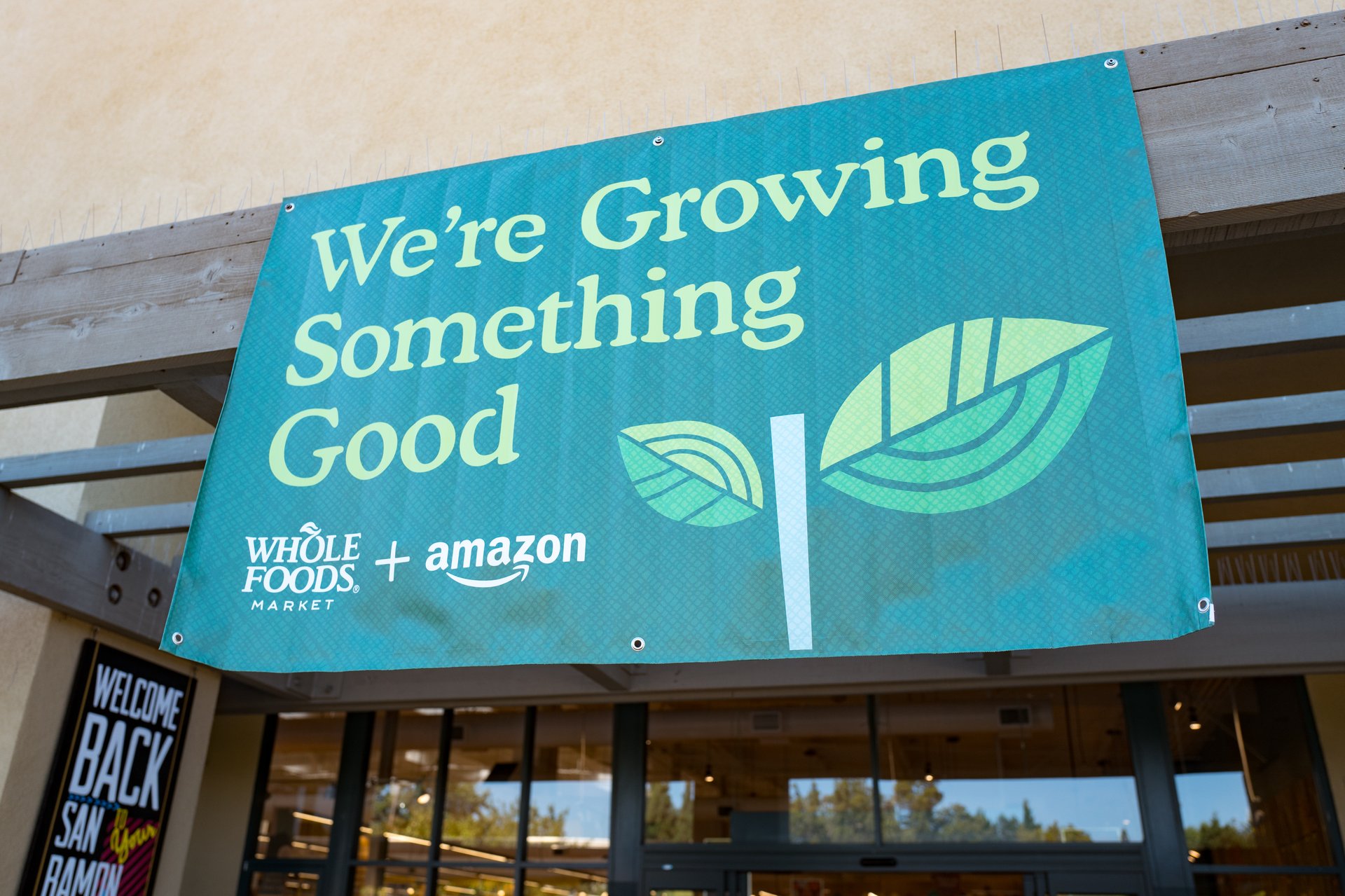Amazon is bringing Whole Foods closer
In a leaked memo, Whole Foods CEO Jason Buechel outlined plans to cut down on duplicative efforts and create a leadership team.

(Photo via Smith Collection/Gado/Getty Images)
When Amazon acquired Whole Foods for $13.7 billion in 2017, the upscale grocer was largely allowed to operate with a surprising level of independence. But that era seems to be over. In a sweeping reorganization, Amazon is integrating Whole Foods more deeply into its broader grocery operations — bringing corporate staff under Amazon’s systems for pay, benefits, and performance, and centralizing leadership across its food businesses under one chain of command.
Suggested Reading
The effort is being led by Jason Buechel, who has run Whole Foods since 2022 and was promoted in January to oversee all of Amazon’s grocery ventures, including Amazon Fresh and Amazon Go. In a leaked internal memo obtained by Business Insider, Buechel called out “duplicative efforts” and missed opportunities, signaling a move toward what he described as “working smarter across teams.”
Related Content
A new leadership team will now coordinate seven core functions, from tech and operations to real estate and logistics, spanning all Amazon grocery brands. While Whole Foods will retain its quality and ingredient standards, the goal is clear: unify systems, share resources, and accelerate growth in a category where Amazon has yet to gain serious traction.
“To make it even easier to collaborate and innovate on behalf of our customers, we’re continuing to unify teams across our grocery brands,” Lauren Snyder, an Amazon spokesperson, said in an emailed statement. “These changes reflect our long-term commitment to making grocery shopping easier, faster, and more affordable for customers.”
Despite years of experimentation, from cashierless stores to Prime-linked perks, Amazon remains a small player in the $1.5 trillion U.S. grocery market — commanding just a sliver of market share (1.4-1.6%) compared with giants such as Walmart (21.2%) and Kroger (8.6%), even with its network of roughly 530 Whole Foods stores and 60 Amazon Fresh locations. Analysts have long pointed to the fragmented nature of Amazon’s grocery efforts as a key barrier to growth. Whole Foods and Amazon Fresh often operated in parallel silos, with limited coordination between teams working on similar problems.
This reorganization aims to break down those silos — and follows a pattern set by Amazon CEO Andy Jassy, who has pushed for tighter integration across adjacent businesses such as Audible and One Medical.
“Too frequently we are duplicating efforts and missing easy opportunities for efficiency,” Buechel wrote in the memo. “We have a big opportunity to work smarter across teams and simplify how we approach shared needs.”
Amazon has slowly been blurring the lines between its grocery arms — leveraging Whole Foods as fulfillment hubs, piloting “Amazon Grocery” micro-stores, experimenting with combined delivery from Fresh centers, and launching budget-friendly private labels. Now, with deeper integration, the company is hoping for sharper rollout of local microcenters, cross-brand pricing discipline, unified inventory systems, and more.
The changes won’t affect frontline workers in stores or warehouses, but they do mark a cultural shift. Whole Foods’ corporate employees will now be measured — and rewarded — according to Amazon's corporate norms. That raises questions about whether the company can preserve the grocer’s identity while subjecting it to Big Tech’s metrics and machinelike efficiency. Meanwhile, external threats loom: Cyberattacks on key distributor UNFI could disrupt grocer pipelines.
Still, for Amazon, the logic is clear. As grocery continues to resist full e-commerce penetration, owning the supply chain and store network is a long game. This time, Whole Foods isn’t just an asset on the balance sheet — it’s a core part of the strategy.